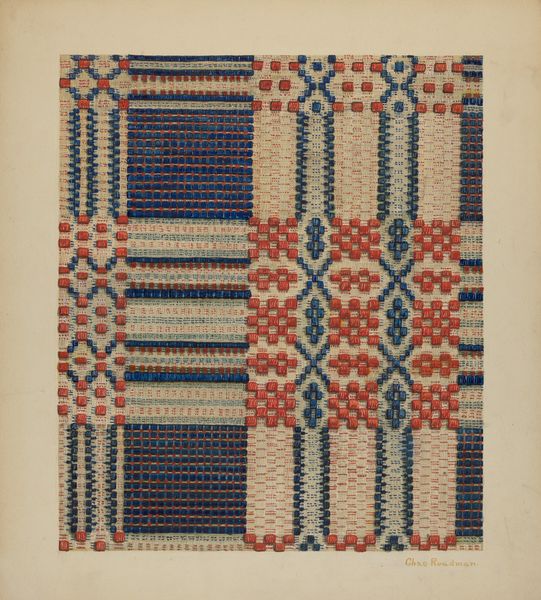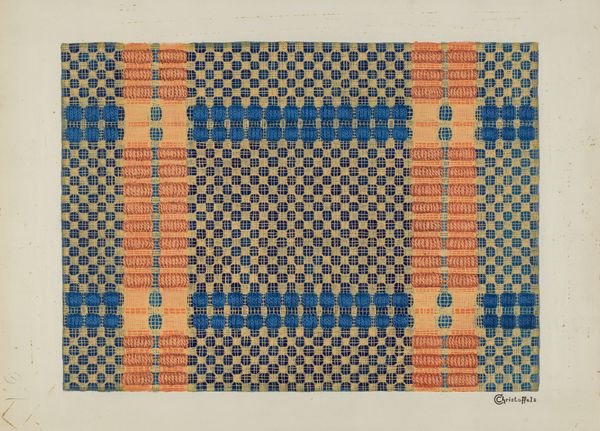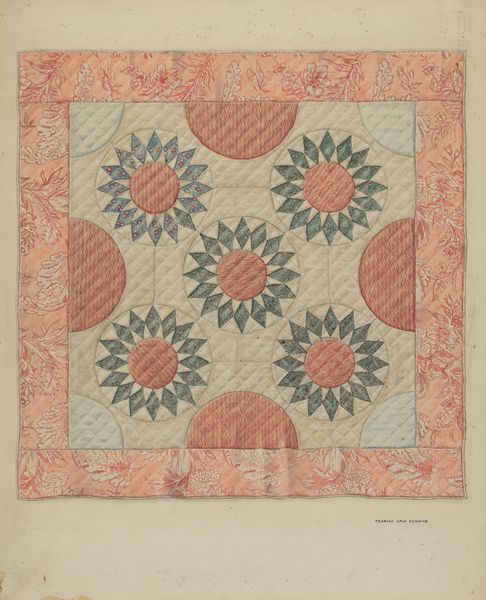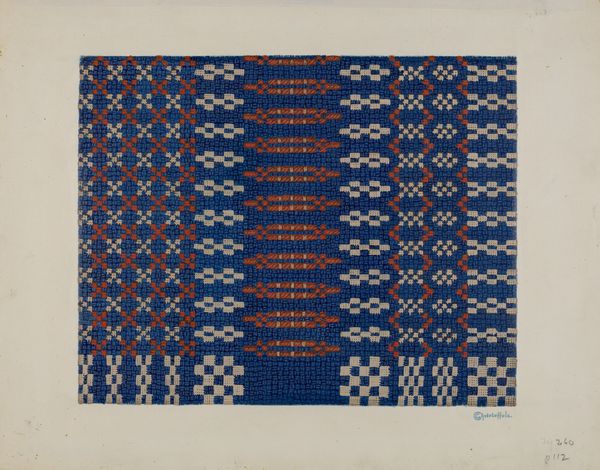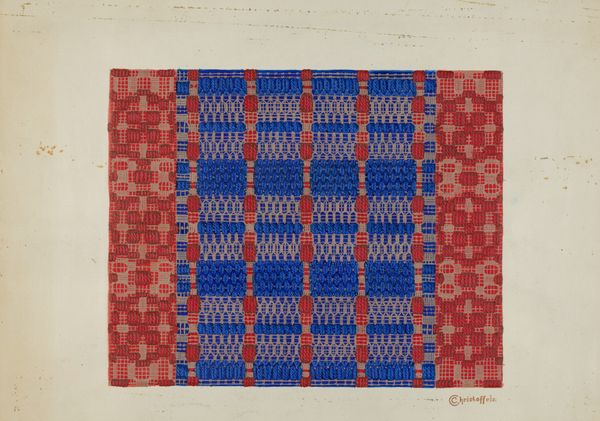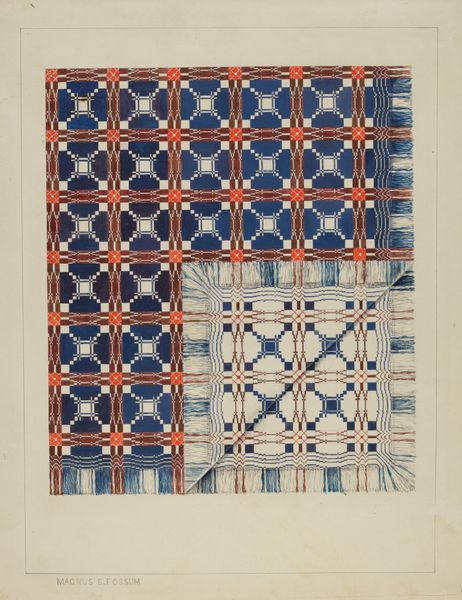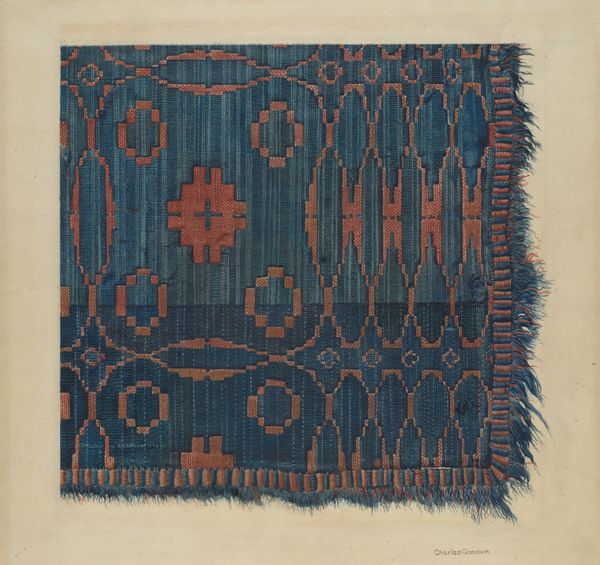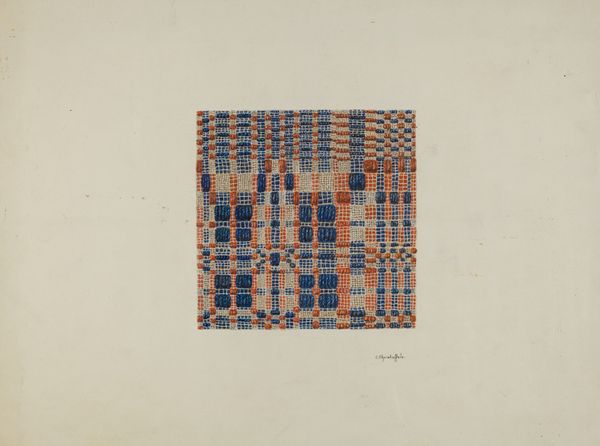
drawing, textile
#
drawing
#
textile
#
fashion and textile design
#
geometric
#
textile design
#
decorative-art
Dimensions: overall: 35.5 x 27.6 cm (14 x 10 7/8 in.) Original IAD Object: 7 3/4" wide; 8 1/4" long
Copyright: National Gallery of Art: CC0 1.0
Curator: Here we have "Coverlet (Reverse Side)," a textile design likely created around 1936 by Ruth M. Barnes. The medium combines drawing with textile work. Editor: It's striking how graphic it is, almost like a minimalist painting. The balance of color and shape generates a powerful sense of visual order and material sensibility. I would assume its geometry lends itself beautifully to various iterations, too. Curator: Geometric patterns in textiles carry deep symbolic weight across many cultures. We can see similar motifs in indigenous weaving traditions and folk art throughout the world, designs connecting individual artisans to long traditions of craftsmanship and communal meaning. This one reads to me almost as a deconstructed quilt pattern, retaining an echo of domesticity. Editor: Interesting point. However, for me, this feels decidedly non-domestic. See how the drawing emphasizes hard edges? It’s almost brutal in its stark simplicity, each textural block meticulously positioned. Note also that by limiting her color palette and intensifying form, Barnes accentuates our focus on shape. Curator: Indeed. Color holds emotional weight here, doesn't it? The choice of these somewhat muted blues and reds perhaps suggests a desire for warmth tempered by reserve. It also perhaps hints at an effort toward simplicity born out of constraints common to the 1930s and, to be sure, still relevant today. Editor: Good point. And that reminds me of the grid’s internal architecture. By deconstructing her square even further, Barnes creates another image and set of shapes. You begin to understand that a coverlet pattern and function—indeed the social status often given textiles, even when deconstructed and isolated here, is always changing, and with it so too are the artwork’s forms and intentions. Curator: It underscores how the functional can contain sophisticated aesthetic and cultural information. Appreciating something like the humble coverlet also enriches our sense of social belonging by preserving what, at first glance, may have seemed only functional, useful and ultimately dispensable. Editor: Very true. Well, this has provided a lovely lens into form and symbol through something easily overlooked!
Comments
No comments
Be the first to comment and join the conversation on the ultimate creative platform.

